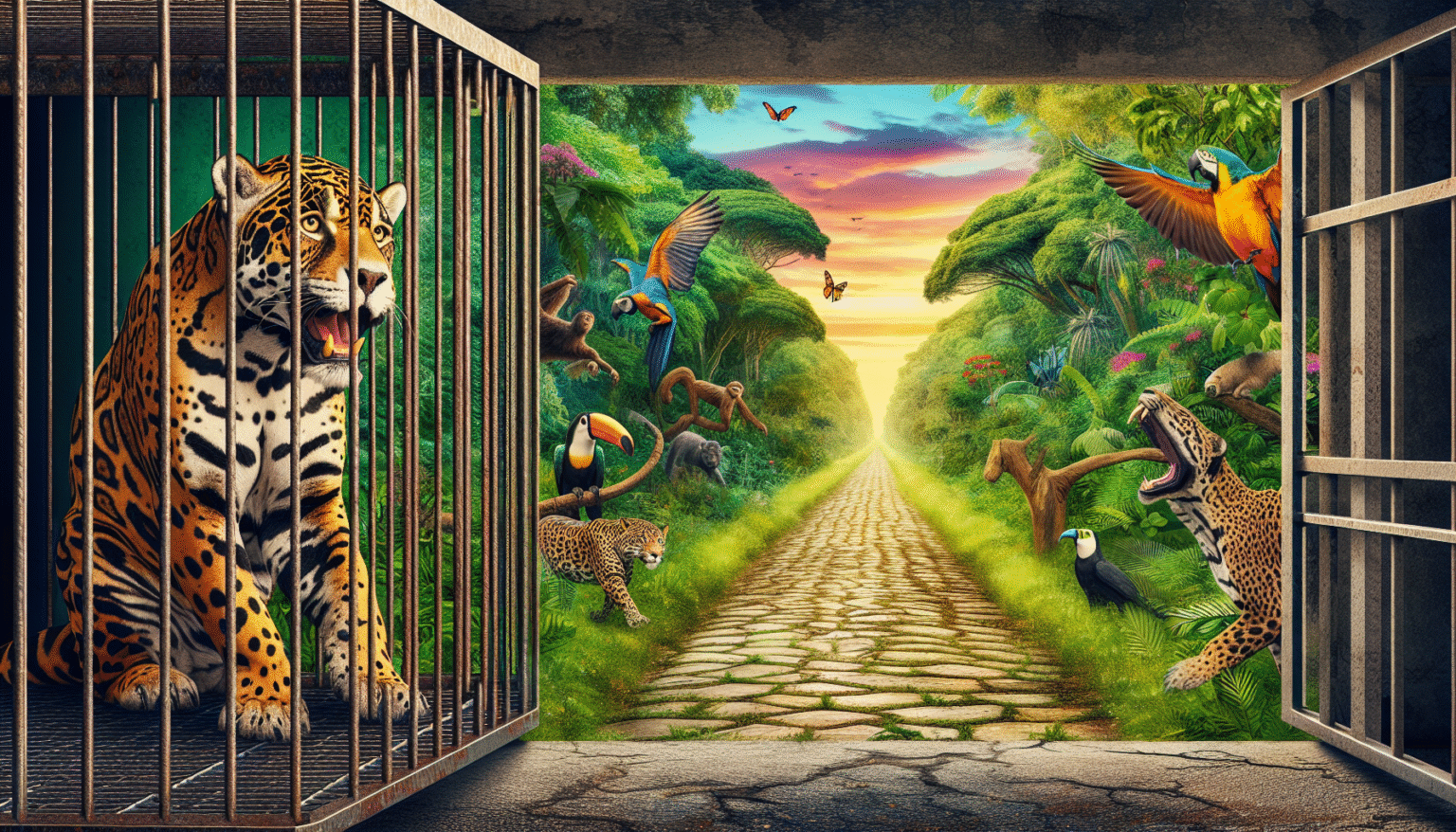From Captivity to the Jungle: Jaguar Rescue Stories
The Conservation Status of Jaguars
Jaguars (Panthera onca) are magnificent big cats native to the Americas, recognized for their powerful build and striking coat patterns. Once roaming vast areas from the southern U.S. to Patagonia, they now face grave threats, primarily due to habitat loss and poaching. Classified as Near Threatened by the IUCN Red List, jaguars are increasingly found in perilous situations, often involving human-wildlife conflict. Rescue organizations have mobilized extensively to save these majestic creatures from captivity and restore them to their natural habitats.
Cases of Captivity: Origins and Consequences
Many jaguars end up in captivity due to illegal wildlife trade, being captured for their pelts, or kept as exotic pets. Stories abound of jaguars who suffer from malnutrition, poor living conditions, and psychological trauma in captivity. These cats often exhibit behavioral changes—depression, aggression, or anxiety—that complicate their rehabilitation.
Case Study: Luna
Luna, a young female jaguar, was rescued from a private zoo in Brazil where she was housed in a small, decrepit cage. She had never experienced the expansive environment of the jungle, which is vital for her physical and mental health. Upon her rescue, she was transferred to a rehabilitation center specializing in the gradual reintroduction of big cats to the wild. This center focused on her physical rehabilitation and behavioral conditioning, ensuring she learned essential survival skills, such as hunting.
The Rehabilitation Process
Successful rehabilitation of jaguars often involves multi-stage processes, including assessment, medical treatment, behavior training, and eventual reintroduction to the wild. Individualized care is paramount, based on the needs and circumstances of each jaguar.
-
Assessment: Initially, each cat undergoes a thorough veterinary examination. This assessment checks for health issues caused by captivity, such as malnutrition and disease.
-
Medical Care: Following the assessment, jaguars receive necessary medical interventions. This may include vaccinations, parasite control, and nutritional rehabilitation.
-
Behavioral Conditioning: At this stage, rehabilitation teams introduce jaguars to natural stimuli through structured environments simulating their wild habitat. They slowly acclimatize the jaguars to environmental sounds, scents, and other animals, reducing stress and enabling natural behaviors.
- Pre-release: This phase includes simulated hunting exercises and teaching the jaguars to navigate varied terrains. Experts often employ mock hunts with prey animals to refine their hunting instincts, building confidence and competence for survival.
Case Study: Max
Max, rescued from an illegal trafficking ring in Colombia, underwent a similar rehabilitation process. He had endured extreme abuse and was found emaciated, fearful, and aggressive. With patience and specialized training, he learned to associate humans not with fear, but with care and compassion. Staff used positive reinforcement techniques, rewarding Max with food for displaying natural behaviors. After several months, he was prepared for pre-release observation in a controlled environment designed to ensure his transition back to the wild was as successful as possible.
Release into the Wild
Releasing a jaguar back into its habitat is a complex and daunting task. Professionals select the release site carefully, ensuring it doesn’t overlap with areas of high human activity where conflicts may arise. Wildlife reserves or protected areas are ideal, providing ample prey and cover.
-
Monitoring: After release, each jaguar is fitted with a GPS collar to track its movements and behavior. This monitoring helps experts gather critical data on habitat use, hunting success, and territory establishment.
-
Community Involvement: Engaging local communities is crucial in fostering a conservation-conscious mindset. Educational workshops help locals appreciate the ecological importance of jaguars in the ecosystem, promoting coexistence and minimizing retaliatory killings.
- Post-release Support: Organizations often maintain a presence in the areas where jaguars have been released. This can include annual check-ups or a reactive response team to handle any conflicts that may arise between jaguars and humans.
Case Study: Nala
Nala, a well-known case in Peru, epitomized the five-year journey of rehabilitation, culminating in a successful release. After being rescued from a tourist attraction, she learned to hunt and explore through structured play and exercise. Her initial release was marred by challenges, including a territorial battle with a dominant male. However, her resilience and learned skills allowed her to adapt, leading to successful integration into a local population.
Impact of Jaguar Rehabilitation
The stories of jaguar rescues underscore much more than individual animal recovery; they tell of a larger movement towards ecological sustainability and conservation. The success of these rehabilitation efforts can lead to increased biodiversity and healthier ecosystems, as jaguars play an integral role as apex predators.
Ecosystem Balance
Jaguars help maintain ecological balance by regulating prey populations, such as deer and capybaras. Their presence aids in preserving plant growth and ensuring a rich biodiversity. Moreover, a robust jaguar population can attract eco-tourism, beneficially impacting local economies.
Education and Awareness
Each successful rescue and release magnifies the educational potential within communities. Transformative stories of recovery foster a deeper understanding and respect for wildlife, creating a ripple effect that encourages conservation practices across various realms of society.
Conclusion: A Collective Responsibility
As jaguar rescue stories unfold, they reveal the intricate web of human responsibility towards wildlife conservation. Each successful return of a jaguar to its natural habitat serves as a beacon of hope—a call to collective action, urging humanity to protect these majestic animals and the ecosystems they inhabit. In doing so, we ensure the legacy of the jaguar remains intact for future generations to admire and cherish.







